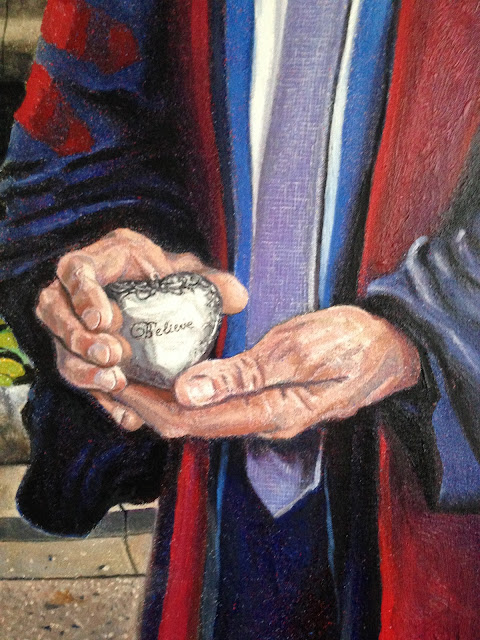Anatomy of a Portrait
The story goes that in 1961, Robert Rauschenberg was invited to participate in a show at Galerie Iris Clert in Paris. All the invited artists were requested to create a portrait of the gallery owner Iris Clert. One artist, Robert Rauschenberg who left things to the last minute decided to send a telegram to Iris saying "this is a portrait of Iris Clert if I say so/Robert Rauschenberg." Clert, so it goes, in a fit of anger threw the telegram in the garbage only to reclaim it after reconsidering the audacity of the gesture and hung the telegram on the gallery wall with the other portraits. This was the sort of rupture in modernist thinking that has led us to constantly reevaluate what exactly a portrait is or is not as the function of portraiture was pushed into the foreground - beyond the subject.
"Nothing
in a portrait is a matter of indifference. Gesture, grimace, clothing,
decor even - all must combine to realize a character." - Charles Baudelaire
The poet Charles Baudelaire however, took another approach, one more in keeping with the subject and not the function of a portrait as a subject of debate. An attempt to "realize a character" seemed to me more in keeping with the true art of portraiture, especially an institutional portrait.
When I got the nod to paint Ray Ivany's portrait I knew nothing of his personality and next to nothing of his public identity. And yet I did know he had championed the One Nova Scotia - Now or Never report and thus cared deeply about the changing culture in Nova Scotia while he held the position of President of Acadia University from 2009 to 2017 in Wolfville, Nova Scotia.
After meeting Ray Ivany and discussing his background and time at Acadia two questions came to mind? Do I look for a portrait of the subject in a state of contemplation or absorption - something where Ray is removed from the consciousness of the viewer? Or should the viewer understand himself as the addressee of a message whose content depicts the nature and character of the depicted subject?
Because we were trying to capture the essence of his time and relationship with Acadia University, I chose the latter because we both thought a narrative would evolve more readily with an engaging concept. So the first of three components was decided.
The second component involved finding a location for the staging of the portrait. As we walked the campus and discussed the issue, the K.C. Irving Environmental Sciences building kept coming up. I recalled that in Acadia's Presidential Portrait collection no artist had yet used the building for a location so any kind of repetition in the collection could also be avoided. The location evolved from an interior to an exterior location; the Harriot Irving Botanical Gardens, thus making it an outdoor portrait coinciding with the return of students to campus.
Over and over again, as I discussed Ray with his colleagues or friends, his connection to the students became a salient talking point. So it became evident to both of us, that if it were possible, students must somehow be incorporated into the final portrait. This was done by staging a photo shoot with former students Annie Kennedy and Matt Rios, and configuring them into the distant middle ground.
The third component involved the final pose and the composition. Numerous sketches were made in the process before a decision was made. A medallion (given to Ray by his wife Laurie Graham), was kept on his desk as president. It was brought to the studio one day and became the final piece of a narrative that provided both individual and collective meaning. The use of the Acadia robe completes a tradition that maintains an interesting evolution in the overall portrait collection in University Hall.
It was an honour to be chosen do this portrait and a great experience to collaborate with Ray Ivany and forge another link in the tradition of presidential portraits at Acadia University.
Steven Rhude, Wolfville, Nova Scotia
.jpg)






Comments
Post a Comment